The London Festival of Photography (part 1)
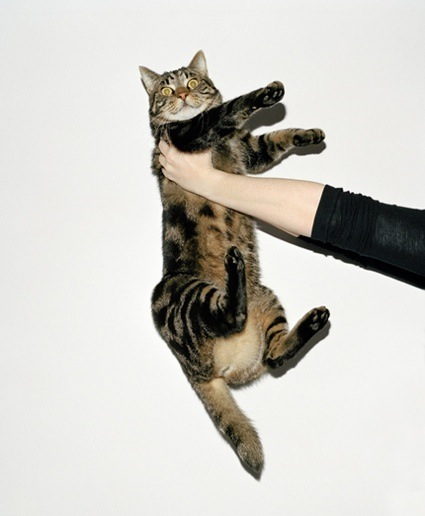 Michelle Tran, Vince, 2010
Michelle Tran, Vince, 2010
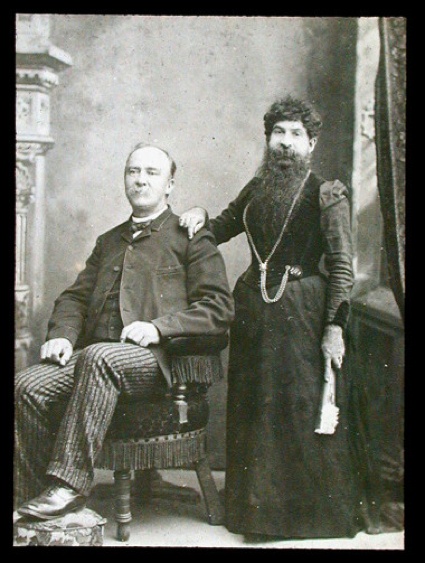 Lantern image of a happy couple c. 1900 (identity unknown)
Lantern image of a happy couple c. 1900 (identity unknown)
The London Festival of Photography is one of my favourite events in town. The theme this year was as broad as it can get: Inside Out: Reflections on the Public and the Private. I’ve seen a magic lantern performance, archive photos of Libya before and during Gaddafi’s regime, documents from Apartheid era South Africa, a photo film of the world’s biggest event for dog lovers. Some of the festival 18 exhibitions and 30 events were hosted in London’s most famous institutions (Museum of London, British Library, British Museum, Tate Modern, the V&A, etc.), some of which relegated the festival exhibitions to a wall by the entrance or a room you could access only when it wasn’t booked for some symposium or reception. Fortunately, independent galleries did a more laudable work.
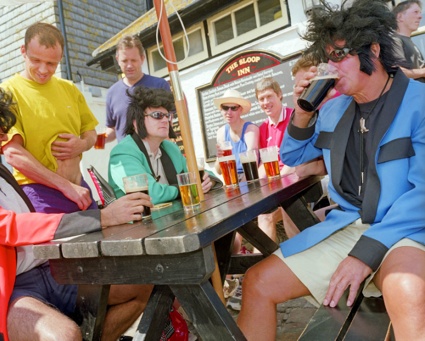 Peter Dench, from the series DrinkUK
Peter Dench, from the series DrinkUK
Most of the exhibitions are now closed. Except these four! Here’s a quick roundup of the ones i’ve seen:
Starting with what will hopefully be my only reference to the Olympics: Gymnasium by Tarryn Gill & Pilar Mata Dupont.
Do me a favour and watch this one on full screen mode:
The film is a direct reference to Olympia, Leni Riefenstahl‘s film documenting the 1936 Summer Olympics in Berlin. The aesthetics and the innovative motion picture techniques developed by Riefenstahl are almost universally admired. Her connection with the Third Reich, however, don’t draw much sympathy.
Gymnasium transposes fascist aesthetic to comment on Australian nationalism. The artists hired 20 actors and dancers to perform as proud ”athletes” participating in a mid-century-style choreography. They wear forced smiles, stiff haircuts and bodies slightly heavier than the ones of contemporary’s athletes.
You have until Friday 20 July to go to Photofusion and watch the full version of the film. It’s part of Hijacked III, a survey exhibition of photographic talents from Australia and the United Kingdom.
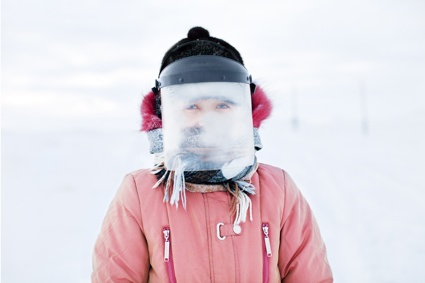 Evgenia Arbugaeva, Astronaut on Neptune or Tanya wears snow mask, January 2011
Evgenia Arbugaeva, Astronaut on Neptune or Tanya wears snow mask, January 2011
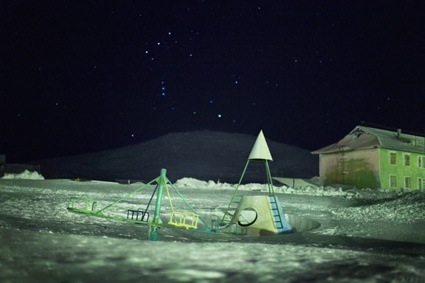 Evgenia Arbugaeva, Tanya being Jacques-Yves Cousteau, January 2011
Evgenia Arbugaeva, Tanya being Jacques-Yves Cousteau, January 2011
Next is the hardest show to find ever! But it was worth the search. Evgenia Arbugaeva was born in the the small Siberian town of Tiksi. She wrote: In the days of the Soviet Union, Tiksi was an important military and scientific base. People came from all over the country, some driven by employment opportunities, and others driven by a romantic dream of the far North. As the introduction implies, although the town is very far north and surrounded by vast expanses of tundra, there was an abundance of beauty. After the fall of the USSR my family, along with many others, boarded the windows of our home and left for a bigger city.
The photographer went back to Tiksi last year. She found an almost abandoned town and asked Tanya, a young girl in awe of Jacques Cousteau, to be her guide to Tiksi. This year, Tanya’s family will leave Tiksi too. They see no future in the small town and plan to move to a larger city.
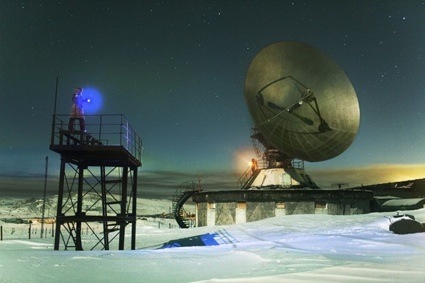 Evgenia Arbugaeva, Weather balloon on Polar meteorological station, January 2011
Evgenia Arbugaeva, Weather balloon on Polar meteorological station, January 2011
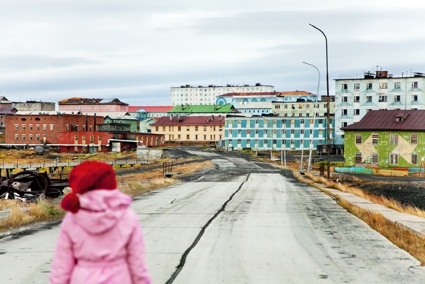 Evgenia Arbugaeva, from the series “Tiksi”
Evgenia Arbugaeva, from the series “Tiksi”
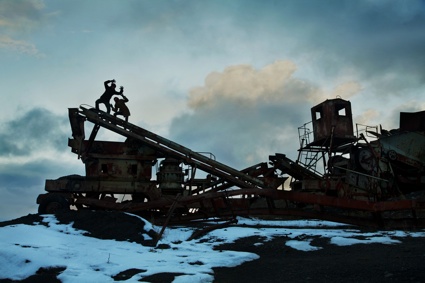 Evgenia Arbugaeva, from the series “Tiksi”
Evgenia Arbugaeva, from the series “Tiksi”
The Guardian gallery had an exhibition of Steve Bloom’s rarely (and in some cases never) seen photographs from the mid 1970’s South Africa.
1976 was a critical year in South African history. The first real cracks in the apartheid system of racial segregation appeared when black school children took to the streets to protest against new laws, which had been introduced to reinforce an inferior education system. The authorities struck back ruthlessly, killing and wounding many defenseless children.
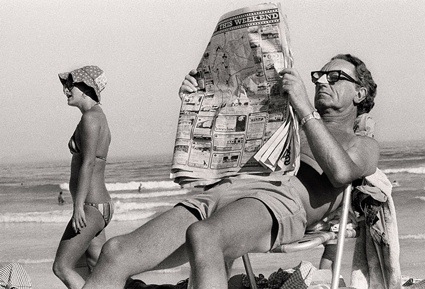 Steve Bloom, Segregated beach, Sea Point, Cape Town, 1976
Steve Bloom, Segregated beach, Sea Point, Cape Town, 1976
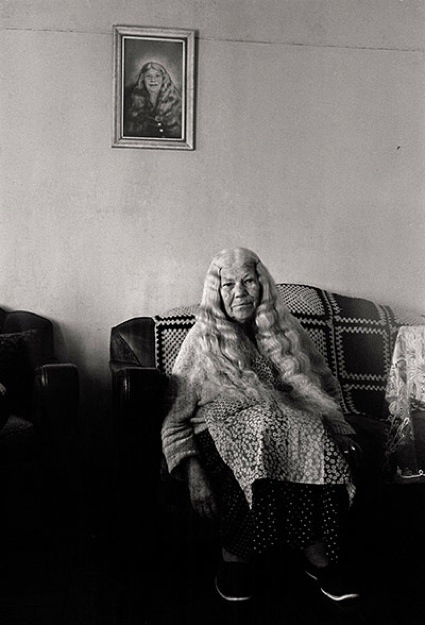 Steve Bloom, Woman at home, Western Cape, 1976
Steve Bloom, Woman at home, Western Cape, 1976
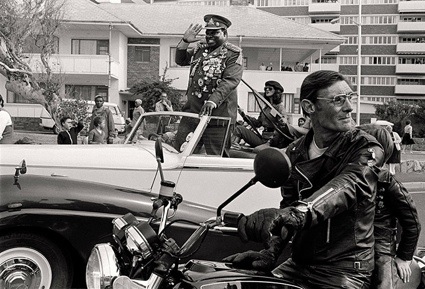 Steve Bloom, Cape Town, 1976. An Idi Amin lookalike, wearing fake medals, takes part in a parade. The brutal Ugandan dictator was often cited by South Africans as a justification for white rule
Steve Bloom, Cape Town, 1976. An Idi Amin lookalike, wearing fake medals, takes part in a parade. The brutal Ugandan dictator was often cited by South Africans as a justification for white rule
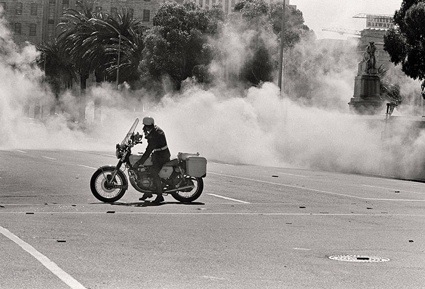 Steve Bloom, Teargas, Grand Parade, Cape Town, 1976
Steve Bloom, Teargas, Grand Parade, Cape Town, 1976
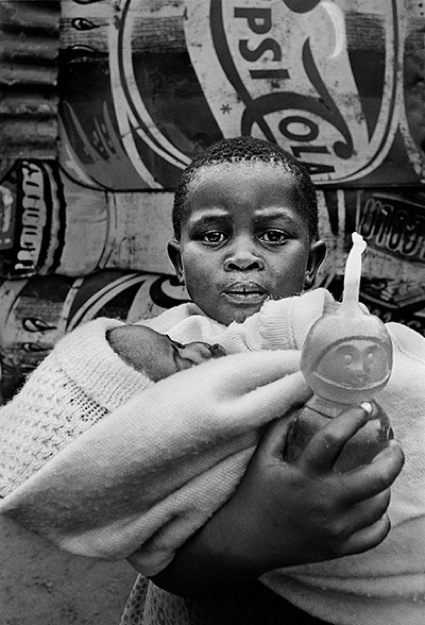 Steve Bloom, Crossroads, 1977
Steve Bloom, Crossroads, 1977
One of the main exhibitions in the festival was titled The Great British Public because, you know, everything British has suddenly become ‘great’ in the UK: the food, the landscape, the music festival.
It was also great photo documentary. Great British photo documentary that celebrates the idiosyncrasies of life in the UK. The photo below is actually too english to be true: the main protagonist in Martin Parr’s photo is a performer dressed as a bobby, standing in a mock street in the Black Country Living Museum in Dudley, Midlands.
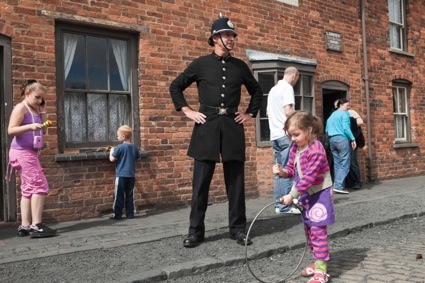 Martin Parr, Dudley, The Black Country, England
Martin Parr, Dudley, The Black Country, England
Arnhel de Serra toured the U.K.’s agricultural shows. His series, When The Sun Sets Over The Royal, shows that agricultural shows are not just for farmers anymore. They provide an entertaining escape for urban dwellers.
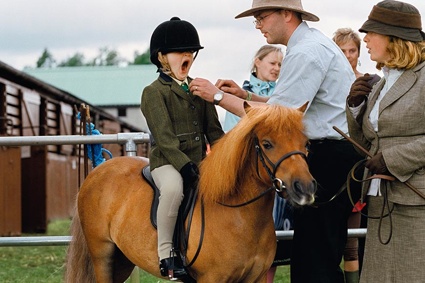 Arnhel de Serra. From the series “When The Sun Sets Over The Royal”
Arnhel de Serra. From the series “When The Sun Sets Over The Royal”
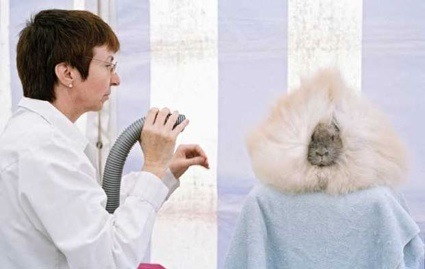 Arnhel de Serra, The Edenbridge and Oxted Agricultural Show, 2008. From the series “When The Sun Sets Over The Royal”
Arnhel de Serra, The Edenbridge and Oxted Agricultural Show, 2008. From the series “When The Sun Sets Over The Royal”
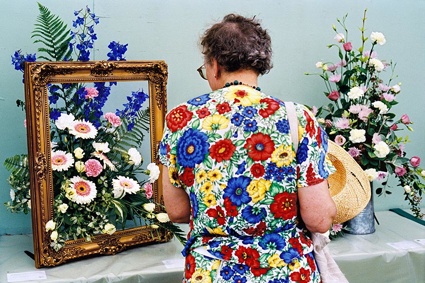 Arnhel de Serra, Peterborough. The East of England Country Show, 2006. From the series “When The Sun Sets Over The Royal”
Arnhel de Serra, Peterborough. The East of England Country Show, 2006. From the series “When The Sun Sets Over The Royal”
Nick Cunard‘s audio slide portrays the working day of an ice cream van man. Mr Whirly aka Ron Sutherland of Chard in Somerset maintains a sunny disposition in spite of the gloomy economic climate, price busting supermarkets, distracted customers and another seemingly crap British summer!
MR WHIRLY [1280X720] from nick cunard – stills moving on Vimeo.
Giulietta Verdon-Roe presents a dramatic portray of rural life. She documented the sharp decline of population in North Ronaldsay, the northernmost islands of Orkney, in Scotland. On her first visit in 2008, the island had 63 inhabitants with four children in the school. When she traveled back to the island two years later, the population had dropped to 51. The school was open but there were no children to teach. And the owner of the only pub couldn’t sell drinks because of the prohibitive costs of the government licensing laws.
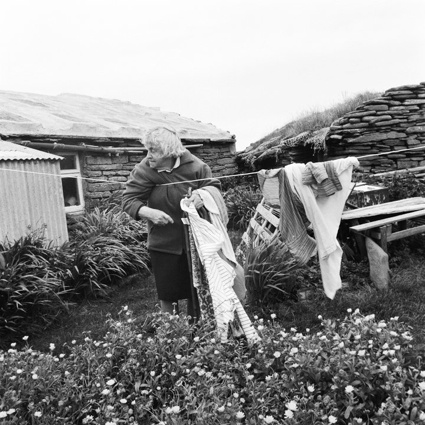 Giulietta Verdon-Roe, from the series As you are
Giulietta Verdon-Roe, from the series As you are
75 years ago, J B Priestley published English Journey, a study of England in 1933. The writer shared his observations on the social problems he witnessed while touring the country, and called for democratic socialist change. Photographer John Angerson recently set out to follow in Priestley’s footsteps to document an England facing recession, homogenisation, celebrity culture and technology addiction.
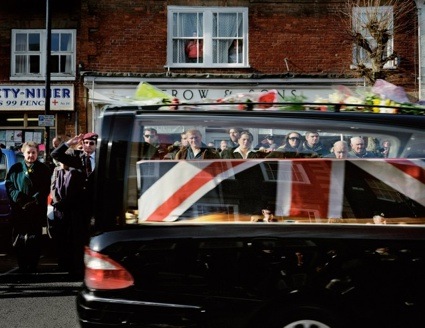 John Angerson, Repatriation procession, Royal Wotton Bassett. 2011. The bodies servicemen and women fallen during the wars in Iraq and Afghanistan are transported from RAF Lyneham and pass through the town of Wootton Bassett on their way to the coroner in Oxford
John Angerson, Repatriation procession, Royal Wotton Bassett. 2011. The bodies servicemen and women fallen during the wars in Iraq and Afghanistan are transported from RAF Lyneham and pass through the town of Wootton Bassett on their way to the coroner in Oxford
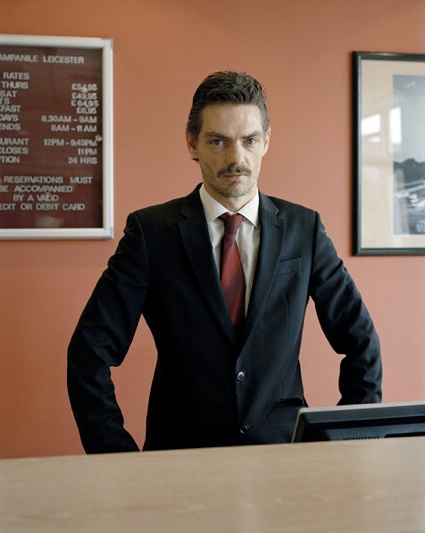 John Angerson, Rob Brown, Deputy Manager of Campanile French Hotel Chain, Leicester
John Angerson, Rob Brown, Deputy Manager of Campanile French Hotel Chain, Leicester
As the title of the series suggest, Hackney – A Tale of Two Cities by Zed Nelson, shows the two faces of a neighbourhood that is associated with gang culture and dereliction, but has also recently become London’s trendiest neighbourhood.
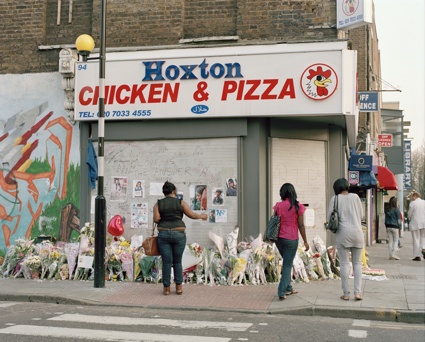 Mourners leave flowers and cards at the murder scene of Agnes Sina-Inakoju, who was killed by a gunshot fired through the window of a fast food restaurant in Hackney. The gunman, 21 years old and riding a bicycle, was trying to scare a rival youth gang. – Zed Nelson
Mourners leave flowers and cards at the murder scene of Agnes Sina-Inakoju, who was killed by a gunshot fired through the window of a fast food restaurant in Hackney. The gunman, 21 years old and riding a bicycle, was trying to scare a rival youth gang. – Zed Nelson
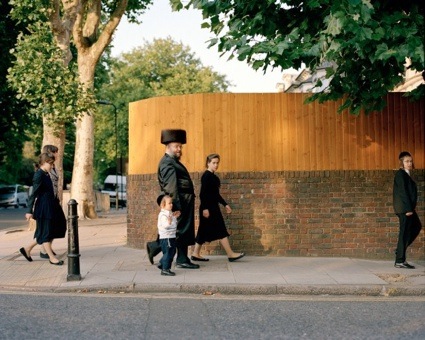 Orthodox Jews in Stoken Newington, Hackney. London. – Zed Nelson
Orthodox Jews in Stoken Newington, Hackney. London. – Zed Nelson
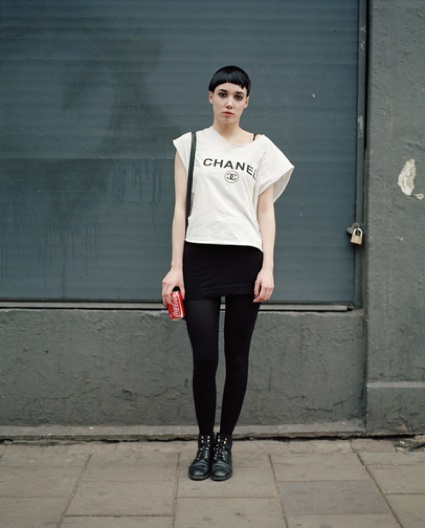 Girl, Kingsland Road, Hackney, London. – Zed Nelson
Girl, Kingsland Road, Hackney, London. – Zed Nelson
The Museum of London asked visitors to send them information about Frederick Wilfred‘s shots of London in the years 1957-62.
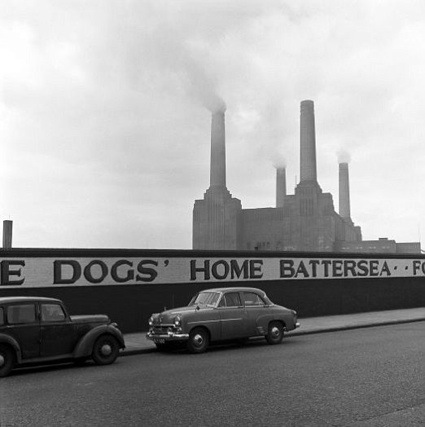 Frederick Wilfred, Battersea Power Station (1925-2010)
Frederick Wilfred, Battersea Power Station (1925-2010)
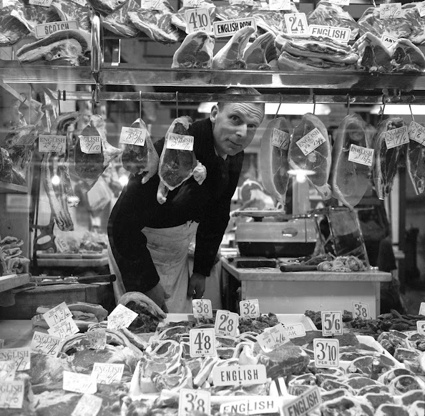 Frederick Wilfred, Butcher looking through his shop window
Frederick Wilfred, Butcher looking through his shop window
They were donated to the museum by Wilfred’s son after the death of the photographer. Most of them had never been shown before and they came with little to no comment about the scenes and people portrayed. They depict a London slowly emerging from the aftermath of WWII.
Don’t miss their fundraising auction on 19 July! I’m really annoyed i can’t get there.
